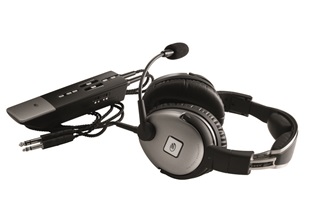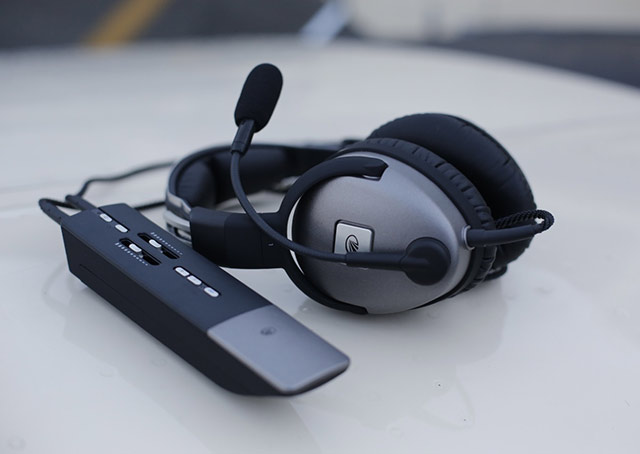With all the recent attention to in-the-ear and on-the-ear headsets, Lightspeed has fired back with a cutting-edge, new over-the-ear model that takes noise attenuation and audio processing to new levels. Years in development, the Lightspeed Zulu PFX uses acoustic response mapping to constantly measure your “unique auditory landscape” (the shape of your ear and the fit of the headset) to fine tune the noise canceling and audio processing as flight conditions change. Put on a pair of sunglasses, for example, and a few seconds later the headset has mapped the new “landscape” caused by the addition of the sunglass frame over your ear. With that, the electronics adjust the noise canceling and you will hear a pronounced change in noise signature.
I’ve flown with Lightspeed Zulu headsets for years and own several pairs of them. When I first put on the PFX, the noise canceling seemed similar. However, shortly after powering up for takeoff I heard a bit of a burble in the headset (apparently the electronics figuring out the quickly changing environment) and then a pronounced drop in sound—so pronounced that I thought something broke. But all was well as the headset was simply doing its job, using its Streaming Quiet capabilities to adjust to the dynamic environment. A series of microphones inside and outside the ear cup constantly measure the sound and respond many times a second to cancel the din.
The default settings on the PFX (which stands for Personal Flying Experience) provide a high-level of noise canceling, but sliding the Home button on the side of the CPU to the Favorites position opens a whole new set of features, including access to an iPad and iPhone app. With a Bluetooth connection between the mobile device and the headset, the free Lightspeed FlightLink app allows further customization of the listening experience, including saving separate user-preferred sound profiles for intercom and music. The Voice Clarity feature further optimizes voice communication, providing a noticeable improvement in the quality of ATC audio. FlightLink, originally introduced in 2012 with earlier Zulu models, also can record and play back audio heard through the intercom and from the radios—helpful for when you missed an ATC call or for using later as an aid for students.

As with many other headsets, the Bluetooth connection also provides linking to a mobile phone, allowing hands-free calls through the headset (with impressive voice quality) and the playing of music from another device. A double tap of the Action button on the CPU turns on and off the ComPriority function, which lowers the sound of phone audio and music when a radio transmission comes in.
The app also allows for customization of the automatic on and off feature (so you don’t leave it powered up after landing) and monitoring of the headset’s battery condition.
All the electronic sophistication comes with two penalties. The PFX requires four AA batteries, compared to two for the simpler Zulu models, and a much larger CPU. Fortunately, the CPU comes with a removable clip, which allows it to be clipped to a side pocket because it won’t fit conveniently in most pockets already overstuffed with checklists, outdated charts, and flashlights. The cables and connectors seems remarkably robust and, well, handsome. The cables are covered in what looks like a woven Kevlar material that makes them exceptionally flexible. However, an advantage of the CPU is that it can be connected via a supplied cable to a computer to receive firmware updates, opening up the possibility of new features and improved performance in the future.
Having flown with the Zulu PFX for several weeks, I can say that it is the quietest headset I have used and certainly with the most advanced audio processing. With PFX, Lightspeed has moved active noise reduction (ANR) technology up a notch after a number of years of no advancement in such electronics for over-the-ear headsets. With that leap, of course, comes a price tag that reflects the quality and capability. At $1,100, PFX is right at the top with the most expensive ANRs available—a place it has a right to be.




